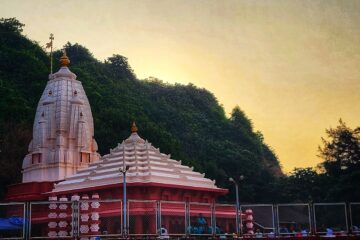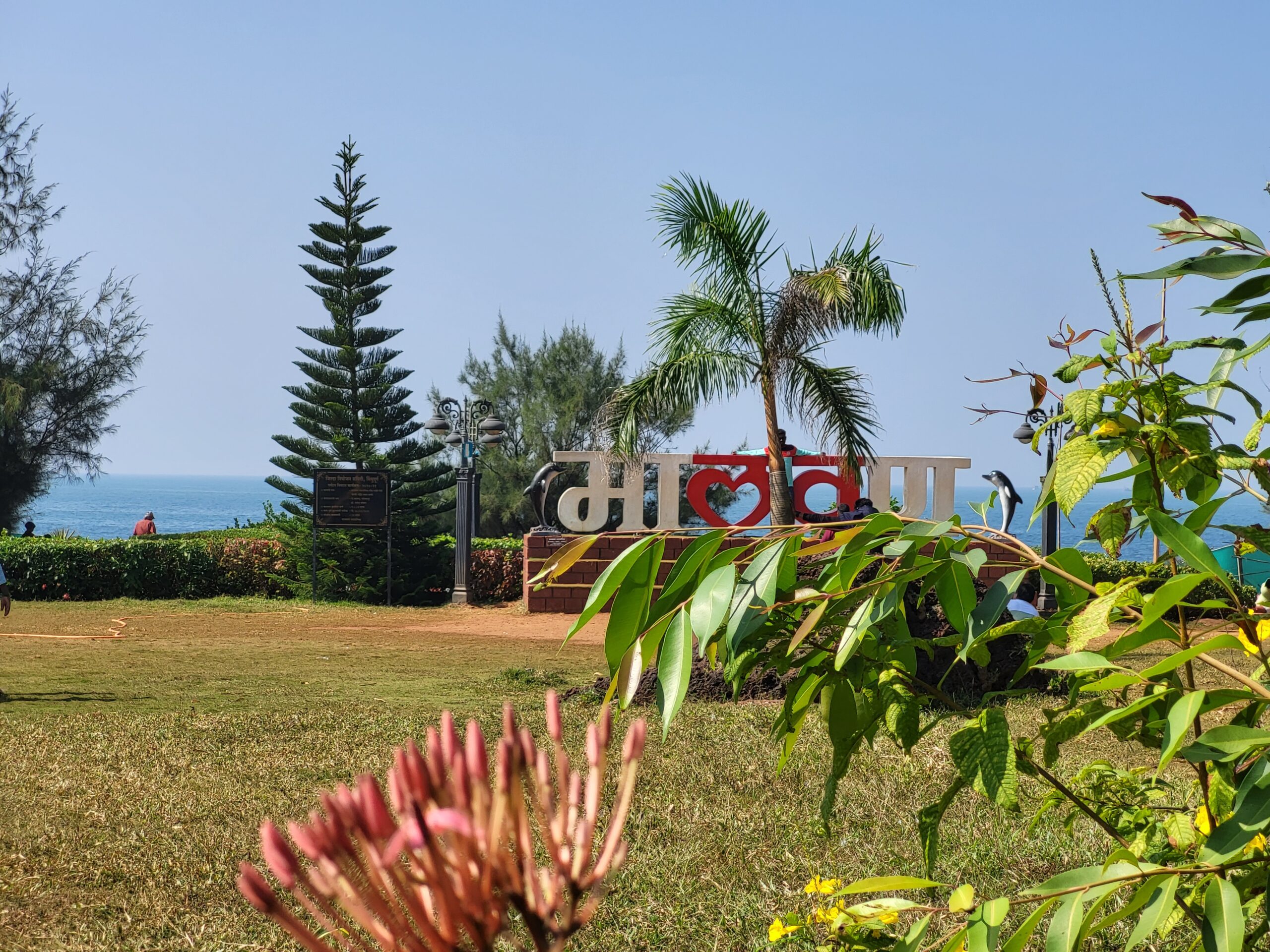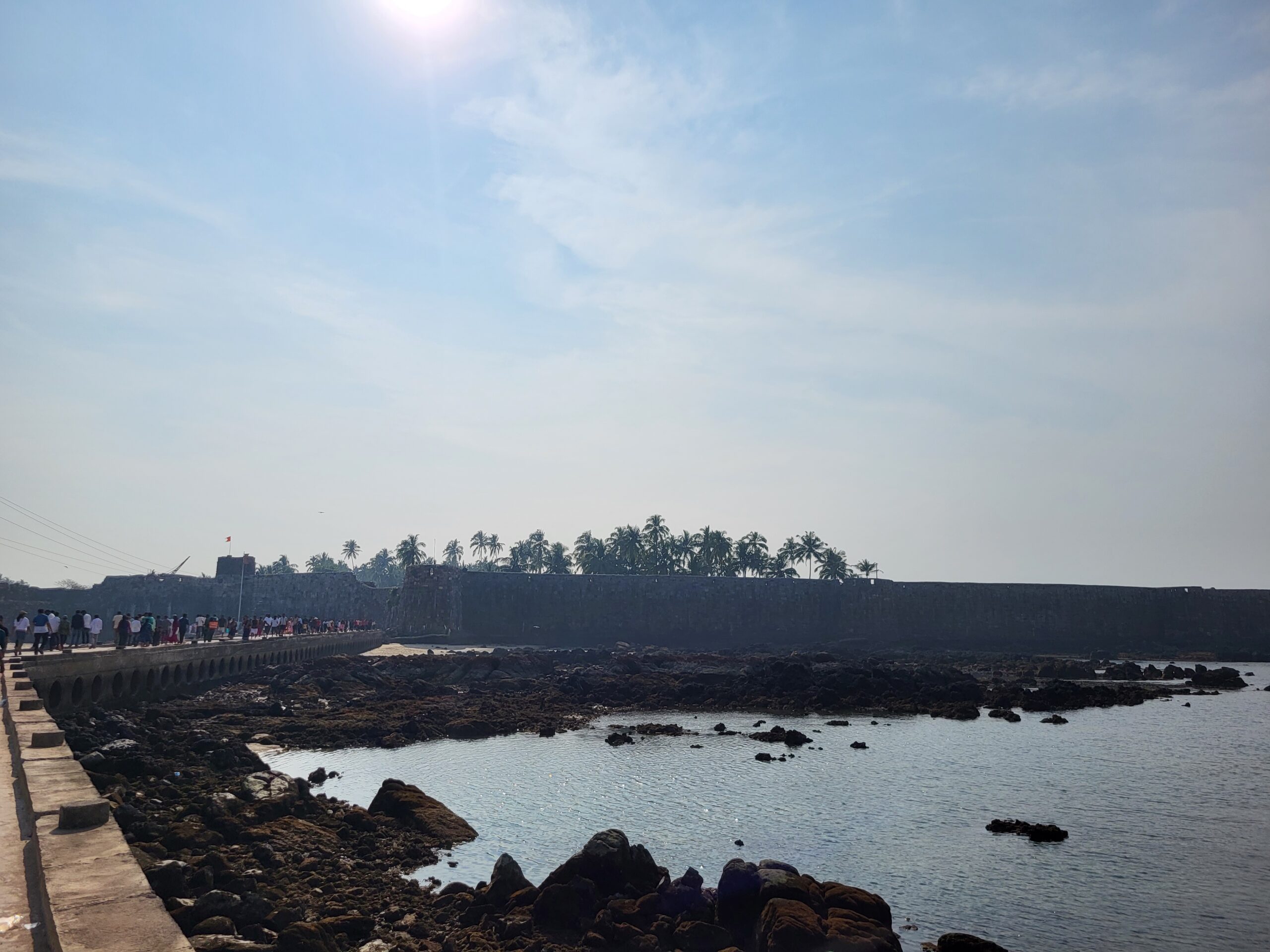I had visited Vengurla Taluka in Maharashtra’s Sindhudurg district many years ago—around 25 to 26 years back—when I went to seek the blessings of the self-manifested Ganpati at Redi and Vetoba at Shiroda. Recently, during a trip to the Konkan region, I got another opportunity to revisit Redi and its surroundings. So, here’s a travelogue of my journey through Vengurla for you.
Redi Village: Known for Ganpati Temple, Yashwantgad Fort, Virgin Beach, and Mining Industry
Located just 8–10 kilometers from Terekhol in Goa, Redi village in Maharashtra’s Vengurla Taluka is famous not only for its revered Ganpati temple but also for its mining industry. As soon as we entered the village, the sight of its red soil served as a reminder of the region’s active mining activities.
Upon reaching the Redi Ganesh temple, we were greeted by women selling flowers, durva (sacred grass), coconuts, and offerings like modaks and laddus, along with a few snacks. Their calls urging devotees to buy offerings filled the air. Choosing a quieter vendor, we purchased flowers and durva before heading toward the temple.
The temple had changed significantly from what I had seen 25 years ago. Back then, it was a small shrine, but now, a grand entrance hall stood before it, filled with devotees. At the temple’s entrance, a group of cows and bulls welcomed us, boldly roaming around as visitors fed them bananas. Some mischievous young calves had even wandered into the main hall.
We stepped past the crowd and entered the smaller hall in front of thesanctum. The sight of Lord Ganpati’s charming and serene form filled my heart with peace. Yet, in that moment of devotion, my mind drifted back in time, recalling the temple and the beloved Ganpati as I had first seen it years ago.
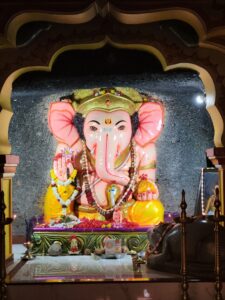
The Legend of Redi’s Ganpati
The Ganpati of Redi village in Vengurla is a self-manifested (Swayambhu) deity, and there is an interesting story behind the discovery of this temple.
A young man named Sadanand Kamble from Nagolewadi in Redi once had a dream in which Lord Ganesh himself appeared and instructed him to unearth an idol buried at a specific location. Following the divine command, Kamble, along with a few others, went to the indicated spot and began digging.
After two days of excavation, they caught the first glimpse of the idol’s ear. It took nearly a month of continuous digging before the entire idol was finally revealed.
Changes in the Ancient Pandava-Era Idol
The original idol of Lord Ganesh was carved from laterite stone, with all its features intact. Experts believe that the idol dates back to the Pandava era.
This historical information is displayed in the temple’s outer hall. Reading it brought back memories of the idol I had seen years ago in its original form. However, the idol now standing before me had been restored and painted, giving it a fresh look. Draped in a yellow garment (pitambar), adorned with a golden crown, holding a modak in one hand, and blessing devotees with the other, the idol looked elegant and captivating.
Kaniyal Elephant’s Trunk
After seeking blessings at the Redi Ganpati temple, we set out towards Yashwantgad. On the way, we noticed a signboard that read “Kaniyal Elephant’s Trunk.” Curious about what it was, we decided to take a detour.
We followed a narrow, winding road, but after some distance, there was still no sign of anything remarkable. Just as we began to wonder if we had lost our way, we spotted a man dressed as a security guard sitting nearby. When we asked him about the place, he reassured us, “It’s right here. Come, I’ll show you. Park your vehicle.”
Following his lead, we walked along a narrow trail, then climbed a few earthy steps, while the sun blazed overhead. After about five to ten minutes of trekking, sweating from the heat, we finally reached the spot—the famous Elephant’s Trunk formation.
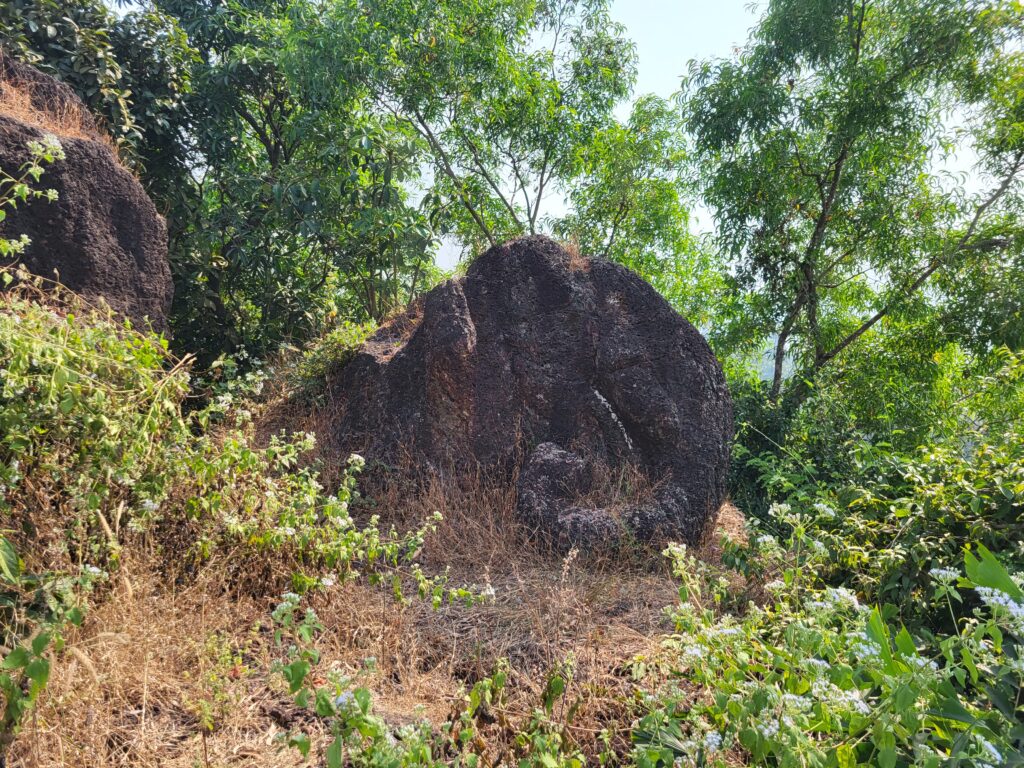
The Elephant’s Trunk Formation
The so-called “Elephant’s Trunk” was actually a rock formation, intricately carved to resemble an elephant’s trunk. Its ears, eyes, and tusks were clearly visible from one side. However, the view was limited to this angle.
To see the other side, we had to navigate a very narrow passage. Since the formation was perched on the edge of a small hill, the drop on the other side wasn’t exactly a deep valley, but it was still a significant descent. To get a full view, one had to tightly grip the “trunk” and carefully balance while crossing the narrow rocky path. Following the others, I cautiously made my way across. But as I looked at the structure from the opposite side, I couldn’t help but feel that it resembled Lord Ganpati more than an elephant.
The guide accompanying us mentioned that this formation was believed to be from the Pandava era. According to local legend, the Pandavas had passed through this region during their exile and had begun carving the figure into the rock. However, as dawn approached, they had to leave before completing the sculpture. We also learned about a massive grinding stone nearby, which was said to have belonged to the Pandavas as well.
Yashwantgad Fort
From there, we proceeded to Yashwantgad Fort, also known as Redi Fort, which is located around 26 km from Vengurla, on a small hill north of the Jaigad Creek. The fort now stands in ruins, with only remnants of its past glory visible.
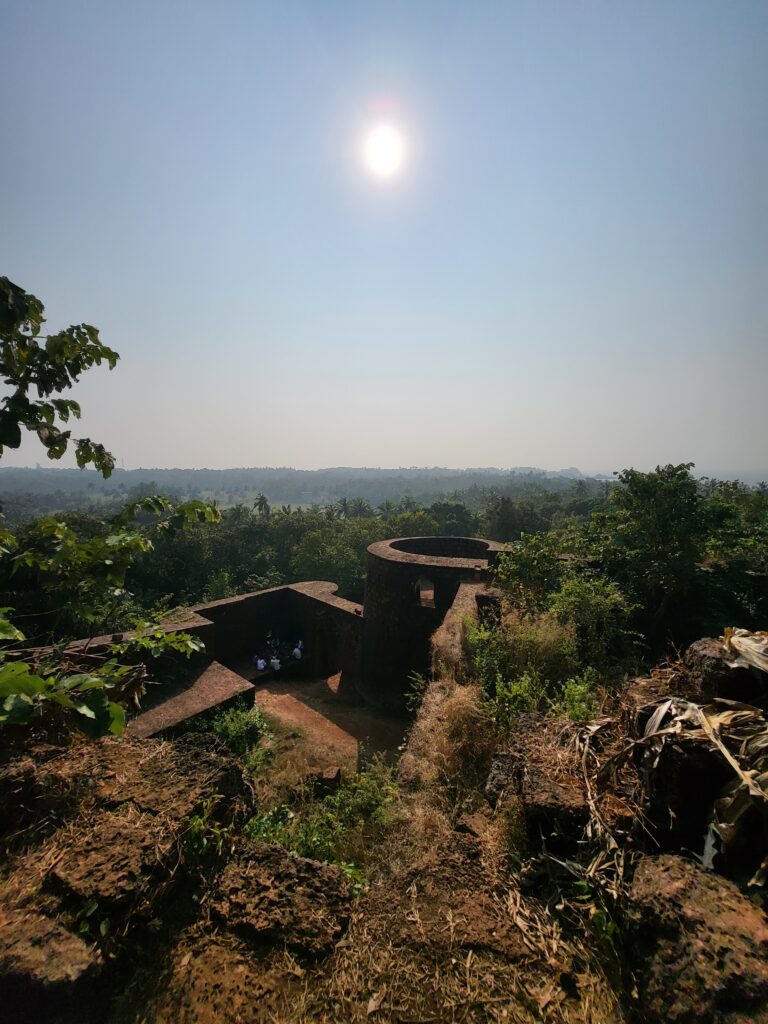
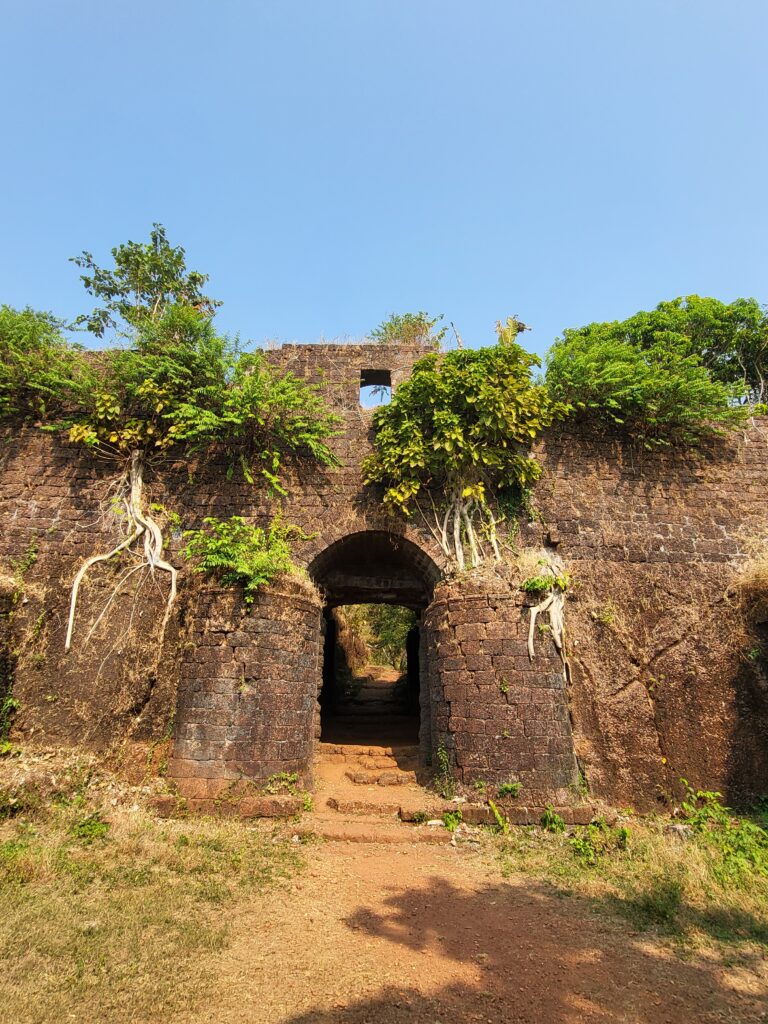
History of Yashwantgad
It is believed that in 610–611 AD, this fort served as a major trade center under Chalukya King Swamiraja. However, the documented history of Yashwantgad begins with the Adilshahi dynasty of Bijapur. The fort was initially captured by the Sawants of Wadi, who later lost it to Chhatrapati Shivaji Maharaj. Shivaji Maharaj strengthened and restored the fort, making it more resilient. In the 18th century, it eventually fell into the hands of the Portuguese.
Present Condition of Yashwantgad
Today, the fort is mostly overtaken by nature. Thick vegetation, tree roots creeping into its foundations, and crumbling ruins dominate the landscape. The remains include roofless chambers and broken corridors, offering a glimpse into its historical past.
One of the highlights of the fort is the breathtaking view of the Virgin Beach, a pristine stretch of white sand lying just beside it. The dense greenery around the fort is home to monkeys and a variety of birds.
Interestingly, alongside Indian visitors, the fort sees a significant number of Russian tourists. The presence of signboards in Russian around the fort is a clear indication of its popularity among them.
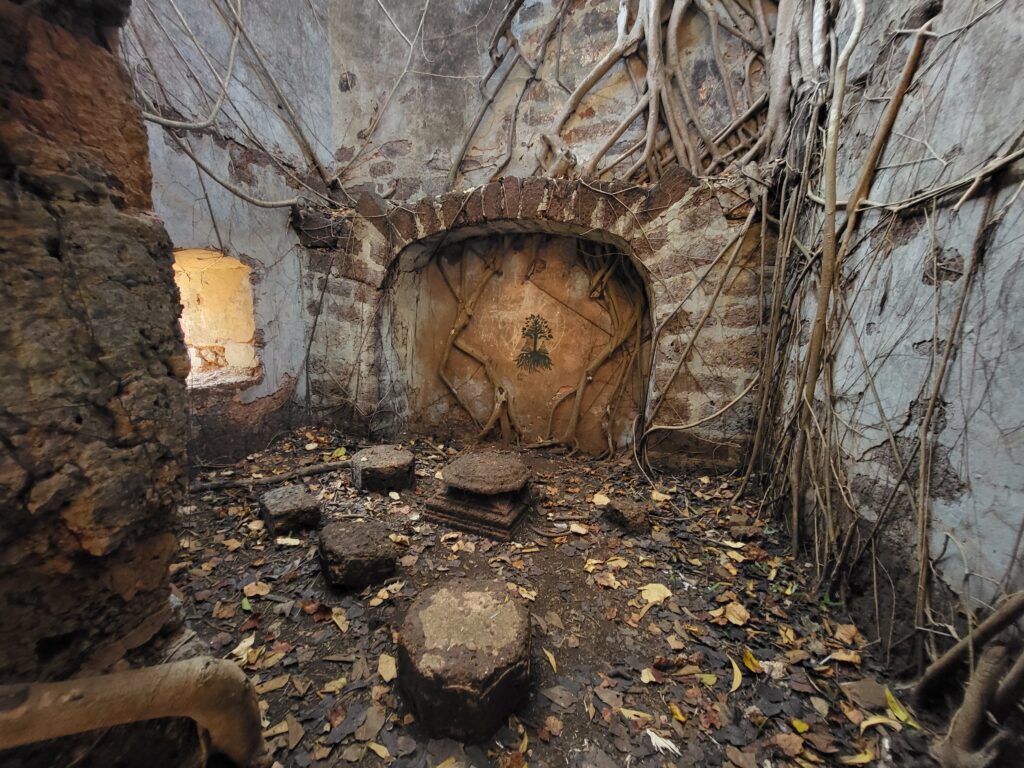

Shri Dev Vetoba of Aravali Village
After exploring Yashwantgad, we proceeded to another renowned and highly revered destination in Vengurla Taluka—the Vetoba Temple of Shiroda. Located in Aravali-Shiroda, about 12 km from Vengurla, this temple is not only significant in Konkan but also holds deep faith among devotees from Goa.
Devotees strongly believe that Shri Dev Vetoba fulfills their vows. One of the unique traditions associated with this deity is the offering of leather footwear. It is believed that Vetoba patrols the village at night, protecting the people, and hence, devotees offer him large-sized leather sandals for his nightly rounds. Many such worn-out, oversized leather sandals can be seen inside the temple.

The idol of Vetoba is a majestic, two-armed figure. While his face and especially his eyes appear somewhat intense at first glance, the idol’s presence is captivating. A deep sense of divine protection fills the heart, making one feel that Vetoba stands as a guardian watching over his devotees. Most visitors leave with a strong resolve to return, as the experience of his presence lingers long after leaving the temple.
